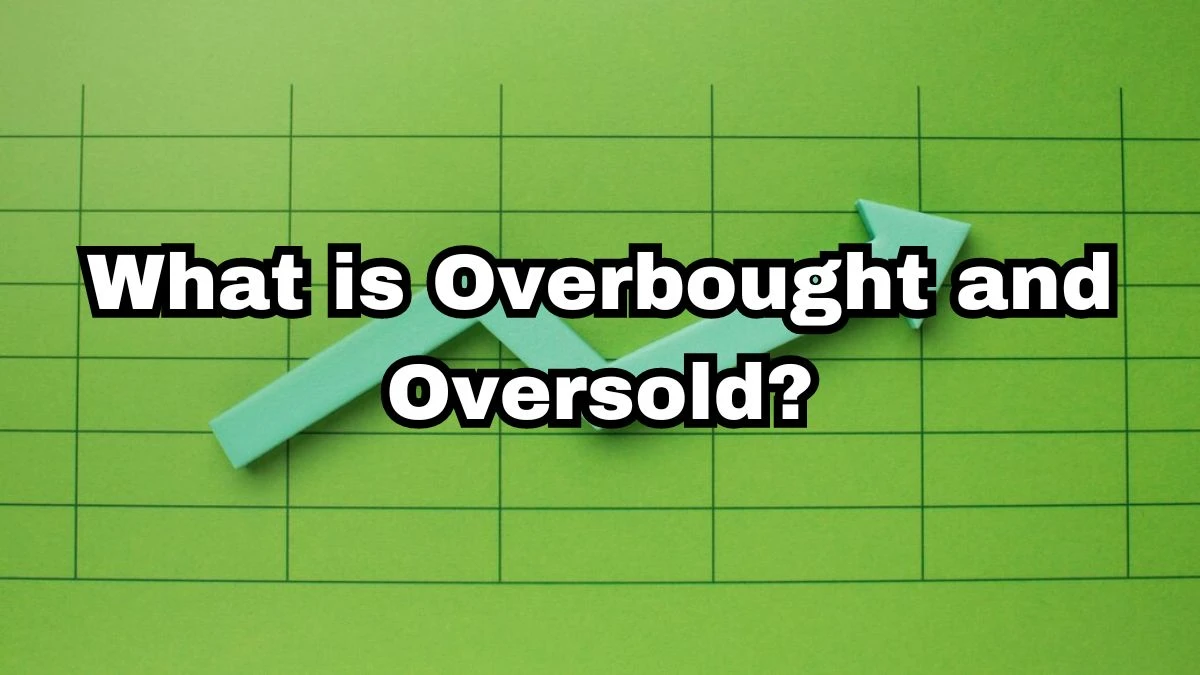
What is Overbought and Oversold?
Overbought means an asset's price has risen too much too quickly, making it seem expensive and likely to drop soon. Oversold means an asset's price has fallen too much too quickly, making it seem cheap and likely to rise soon.
by Ruksana
Published Aug 07, 2024 | Updated Nov 13, 2025 | 📖 5 min read
What is Overbought and Oversold?
Overbought:
An asset is considered overbought when its price has increased too quickly over a short period, making it potentially more expensive than its real value. This situation can occur in any financial market, including stocks, forex, and commodities. When an asset is overbought, many investors have been buying it, driving up its price because of high demand.
However, this buying spree often does not last forever. Eventually, the price may reach a point where buyers feel it is too expensive compared to the asset's actual worth or its recent historical price range. At this point, the asset may be due for a price correction or a drop.
Traders watch for overbought conditions as a signal that the price might soon reverse or fall. Indicators like the Relative Strength Index (RSI) and the Stochastic Oscillator can help identify overbought levels by showing that the buying activity has been extreme.
This understanding helps traders make decisions about when to sell or avoid buying at high prices, expecting that the price may decrease soon.
Oversold:
An asset is considered oversold when its price has dropped rapidly and significantly, making it seem cheaper than its actual value. This can happen across different markets, including stocks, forex, and commodities. Overselling occurs when many investors sell off an asset, pushing its price down quickly.
This sharp decrease often causes the asset to look undervalued or "too cheap." Such a situation usually reflects pessimistic market sentiment, where investors may have reacted to negative news or expectations. However, once the selling pressure exhausts itself, the asset might become attractive to buyers who see it as a bargain.
As a result, the price may be set for a rebound or increase. Traders use oversold conditions as a potential opportunity to buy low, anticipating a rise in price as the market corrects itself.
Indicators like the RSI and the Stochastic Oscillator can help identify oversold levels by indicating that the selling pressure may have been excessive. Recognizing oversold conditions helps traders plan their entry points to buy assets at potentially low prices, hoping to benefit from a subsequent price recovery.
What is the best Indicator for Overbought and Oversold?
One of the most popular and effective indicators for identifying overbought and oversold conditions is the Relative Strength Index (RSI). The RSI is a momentum oscillator that measures the speed and change of price movements, providing a number between 0 and 100.
It is widely used because it is straightforward and provides clear signals about market conditions. Typically, an RSI above 70 suggests that an asset may be overbought, indicating that it might be due for a price correction or pullback. Conversely, an RSI below 30 indicates that an asset might be oversold, suggesting a potential price rebound.
Another widely used indicator is the Stochastic Oscillator, which compares a security’s closing price to its price range over a certain period. This oscillator is also measured on a scale from 0 to 100, with readings above 80 indicating overbought conditions and readings below 20 indicating oversold conditions. The Stochastic Oscillator helps traders spot price reversal points by highlighting extremes in buying or selling pressure.
Both RSI and the Stochastic Oscillator are valuable tools for traders looking to identify potential entry and exit points based on overbought and oversold conditions. They can be used together to confirm signals, providing a more robust analysis when making trading decisions. However, no indicator is foolproof; they should always be used in conjunction with other analysis methods and sound risk management practices.
How to Use Technical Analysis to Identify Overbought and Oversold Stocks
1. Using Relative Strength Index (RSI):
- Overbought Signal:
If the RSI value is above 70, it suggests the stock might be overbought, meaning it could be priced too high and might fall.
- Oversold Signal:
If the RSI value is below 30, it indicates the stock might be oversold, suggesting it could be priced too low and might rise.
2. Making Trading Decisions:
- For Overbought Stocks:
When a stock is identified as overbought, it might be a good idea to consider selling or holding off on buying until the price corrects itself. Overbought conditions can signal a potential decline, so you may want to lock in profits or wait for a better entry point.
- For Oversold Stocks:
When a stock is identified as oversold, it may present a buying opportunity. Look for signs of a price recovery or stabilization before purchasing. An oversold condition can indicate that the stock might soon rise, making it a potential buy.
3. Combining with Other Information:
- Use Multiple Tools:
While RSI and Bollinger Bands are useful, it’s important to use them alongside other analysis tools and information. This helps to get a more complete picture of the stock’s potential movements and make better-informed decisions.
- Monitor Market Conditions:
Keep an eye on overall market trends and news that might affect stock prices. Combining technical indicators with fundamental analysis and market insights can enhance your trading strategy.




